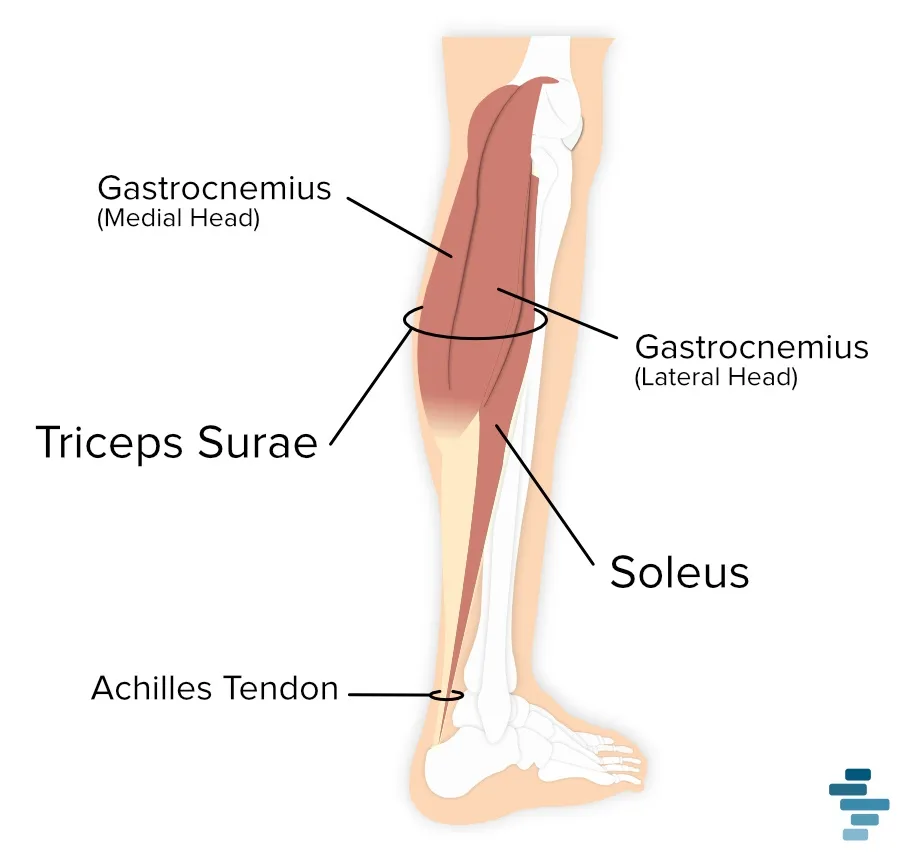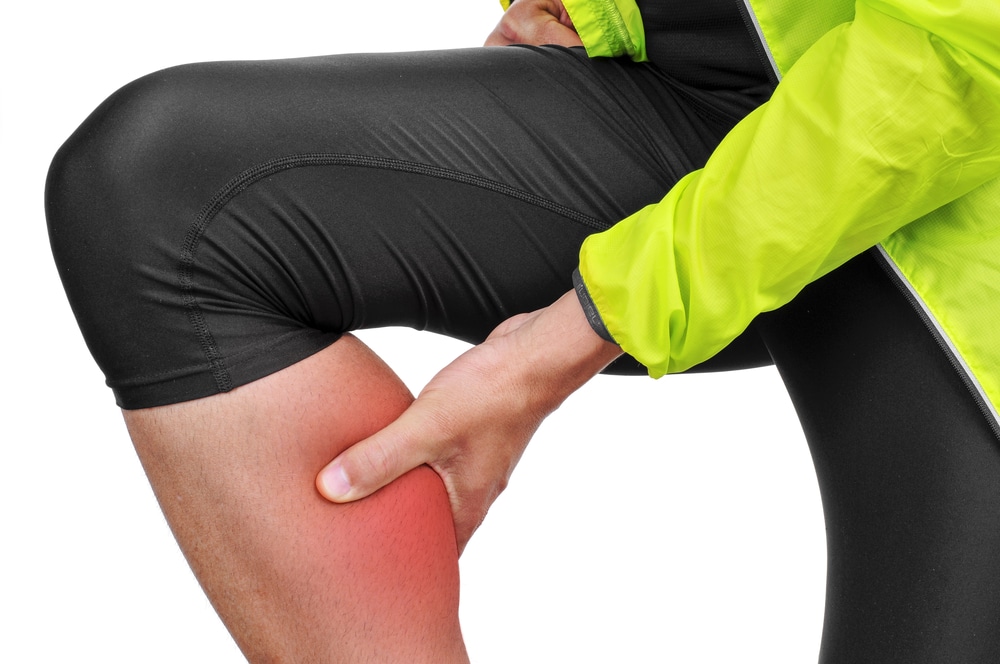Anatomy of the Triceps Surae Muscle Group
The triceps surae muscles are located in the posterior compartment of the leg, which is divided into a superficial and deep layer. The superficial layer includes the gastrocnemius muscle, the soleus muscles, and the plantaris muscle.

Gastrocnemius Muscle
The gastrocnemius muscle is the most superficial of the triceps surae group and has two parts, often referred to as the heads of the gastrocnemius: the medial and lateral heads. These originate from the femoral condyle at the knee joint and form the bulk of the calf. The gastrocnemius muscle plays a significant role in plantar flexion of the foot at the ankle joint and also assists in flexing the knee joint.
Soleus Muscles
Beneath the gastrocnemius muscle lies the soleus muscles. Unlike the gastrocnemius, the soleus muscles do not cross the knee joint. They originate from the upper tibia and fibula, attaching to the calcaneal tendon. The soleus muscles are primarily responsible for plantar flexion at the ankle joint, especially during standing and walking, as they maintain posture and balance.
Plantaris Muscle
The plantaris muscle is a small, thin muscle that lies between the gastrocnemius muscle and soleus muscles. It has a long, thin plantaris tendon that inserts into the calcaneal tendon. The plantaris muscle is often considered vestigial and can sometimes be mistaken for a nerve due to its slender shape. Despite its small size, the plantaris muscle contributes to plantar flexion and knee flexion.
Tendon Insertion and Nerve Supply
The triceps surae muscle group attaches to the heel via the Achilles tendon, also known as the calcaneal tendon. This tendon is the strongest and thickest tendon in the human body. Capable of withstanding the immense forces generated during activities like sprinting and jumping.
The triceps surae muscle is innervated by the tibial nerve, a branch of the sciatic nerve. The tibial nerve travels down the back of the leg and supplies motor signals to the triceps surae muscles, allowing them to contract and produce movement. The sural nerve, a cutaneous nerve, provides sensation to the lower leg and lateral foot. This nerve is often used in nerve grafting procedures due to its superficial location and ease of access.
Functional Roles of the Triceps Surae Muscle Group

The triceps surae group plays a crucial role in various lower limb movements, including:
Plantar Flexion: The primary function of the triceps surae muscles is plantar flexion at the ankle joint. Which is essential for pushing off the ground during walking, running, and jumping.
Knee Flexion: The gastrocnemius muscle assists in flexing the knee joint due to its origin at the femoral condyle.
Stabilization: The soleus muscles help stabilize the leg during standing. Preventing the body from falling forward by maintaining the foot in a neutral position.
Propulsion: The powerful contraction of the triceps surae muscles generates the force needed to propel the body forward during dynamic movements like sprinting.
Common Injuries and Issues
Due to their crucial role in movement, the triceps surae muscles are susceptible to various injuries, such as strains, tears, and tendinitis. The Achilles tendon is particularly vulnerable to overuse injuries, especially in athletes. Overloading or improper training can lead to conditions like Achilles tendinitis or even rupture of the calcaneal tendon.
The plantaris muscle and its plantaris tendon can also be a source of pain, often mistaken for a nerve issue due to its size and location. Injuries to this muscle, though rare, can mimic more severe conditions like deep vein thrombosis or sural nerve entrapment.

Exercises to Strengthen the Triceps Surae Muscles
Strengthening the triceps surae muscle group is vital for athletes and anyone looking to improve their lower body strength and stability. Below are some effective exercises:
1. Calf Raises
Calf raises are the most basic yet effective exercise for targeting the triceps surae muscles. They involve standing on a raised surface with your heels hanging off and then rising onto your toes. Engaging the gastrocnemius muscle, soleus muscles, and plantaris muscle. Performing calf raises with bent knees can specifically target the soleus muscles.
2. Seated Calf Raises
This variation of calf raises focuses more on the soleus muscles since the knee joint is flexed, reducing the involvement of the gastrocnemius muscle. It’s an excellent exercise for building endurance and strength in the soleus muscles.
3. Eccentric Calf Raises
Eccentric calf raises involve slowly lowering the heel back to the ground after a calf raise. This exercise is particularly effective for strengthening the Achilles tendon and preventing injuries by improving the muscle-tendon unit’s capacity to handle load.
4. Box Jumps
Box jumps are a dynamic exercise that strengthens the triceps surae muscles while also improving explosive power. They require a powerful contraction of the triceps surae group to propel the body upward onto a raised surface.
5. Tip-Toe Walking
Walking on your toes, also known as tip-toe walking, is a simple yet effective way to engage the triceps surae muscles throughout the day. It helps in strengthening these muscles while improving balance and coordination.
Conclusion
The triceps surae is a powerful and essential muscle group that plays a critical role in everyday movements and athletic activities. Understanding its anatomy, functions, and the importance of maintaining its strength can help prevent injuries and improve overall lower limb function. By incorporating specific exercises and being mindful of potential injuries. Individuals can ensure the longevity and health of the triceps surae muscles, enabling them to perform at their best in both daily activities and sports.

